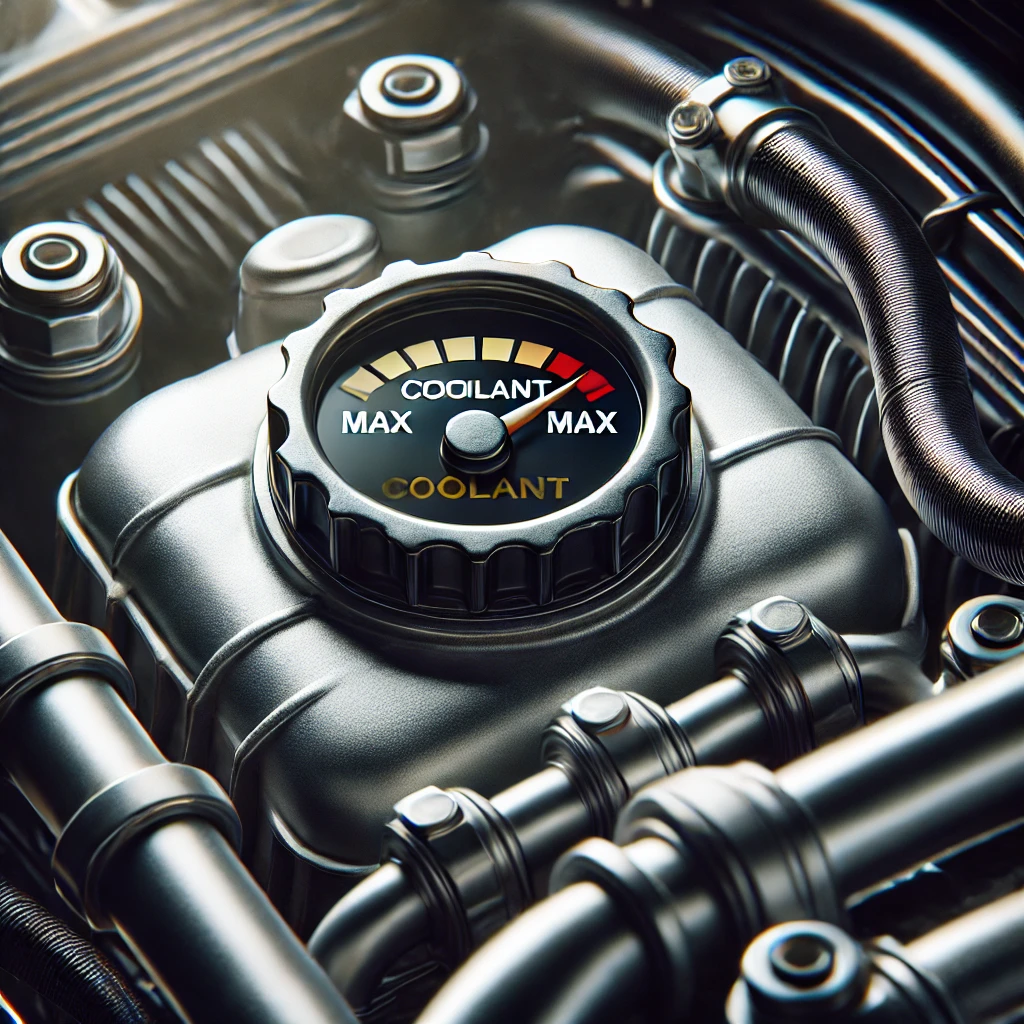Introduction to Motorcycle Coolant
Motorcycle coolant plays a vital role in regulating your engine’s temperature, ensuring it operates within a safe range. However, there’s a common misconception among riders that overfilling coolant is not dangerous. Understanding the risks and proper maintenance practices can help prevent potential damage to your motorcycle’s engine.
For more insights on maintaining your motorcycle, you might be interested in learning about the importance of keeping your motorcycle in optimal condition, which includes understanding coolant levels and other essential fluids.
The Role of Coolant in Motorcycle Engines
Coolant is essential for maintaining your motorcycle’s optimal performance by regulating engine temperature. It prevents your engine from overheating during rides and protects against corrosion and freezing in colder climates. However, some riders mistakenly believe that adding extra coolant is harmless. To better understand why this can be problematic, it’s crucial to recognize the importance of maintaining proper coolant levels.
If you’re interested in exploring more about the technical aspects of motorcycles, the 2003 Motorcycle Innovations provide a historical perspective on how motorcycle technology has evolved, including cooling systems.
What Happens When You Overfill the Coolant?
Overfilling your motorcycle’s coolant reservoir can lead to several issues, including pressure buildup and leaks. When too much coolant is added, it leaves less space for expansion as the engine heats up. This can cause the coolant to overflow, leading to a messy situation and potential engine damage. Maintaining proper coolant levels is essential not only for performance but also for the longevity of your motorcycle’s engine.
For those looking to dive deeper into motorcycle maintenance, the Spotlight on BMW’s 2003 Lineup offers insights into the critical importance of engine care, including coolant management.
Why Some Riders Believe Overfilling is Not Dangerous
Some riders argue that overfilling the coolant reservoir is not dangerous because the excess will simply overflow. However, this overlooks the potential for increased pressure within the cooling system, which can strain hoses, seals, and even the radiator. Over time, this can lead to leaks or even a complete cooling system failure.
How to Check and Maintain Proper Coolant Levels
Maintaining the correct coolant level is straightforward but crucial. Here’s a step-by-step guide:
- Check the coolant level: Always check the coolant level when the engine is cold. This will give you an accurate reading without the risk of burns from hot coolant.
- Top off if necessary: If the level is low, add coolant until it reaches the recommended level. Avoid overfilling by monitoring the “Max” and “Min” markers on the reservoir.
- Use the correct type of coolant: Ensure you’re using the coolant recommended by your motorcycle’s manufacturer. Mixing different types can lead to poor performance or damage.
What to Do If You’ve Overfilled the Coolant
If you suspect that you’ve overfilled the coolant, don’t panic. Here’s what you should do:
- Safely remove excess coolant: Use a clean siphon or a similar tool to remove the excess coolant. Make sure the engine is cool before attempting this.
- Monitor for leaks: After removing the excess, keep an eye on your cooling system for any signs of leaks or damage.
- Check engine temperature: Pay attention to your engine temperature gauge during your next ride to ensure everything is functioning correctly.
Coolant Maintenance Best Practices
Proper coolant maintenance goes beyond just topping off the reservoir. Follow these best practices to keep your motorcycle running smoothly:
- Change and flush coolant regularly: Change your coolant at least once a season, or more often if you ride frequently. Flushing the system helps remove contaminants and prevents scaling.
- Avoid additives unless recommended: Mixing coolants or adding aftermarket additives can cause clogs or reduce cooling efficiency.
- Inspect hoses and seals: Regularly inspect the hoses and seals for any signs of wear or damage, especially after overfilling incidents.
The Risks of Ignoring Coolant Issues
Neglecting coolant maintenance can lead to severe engine problems, including overheating, corrosion, and eventually, engine failure. Consistently overfilling the coolant can exacerbate these issues, leading to costly repairs and downtime. Regular checks and proper maintenance are essential for ensuring your motorcycle’s long-term health.
FAQs
- Is it safe to ride if I accidentally overfilled the coolant?
It’s generally safe, but you should remove the excess coolant as soon as possible to prevent potential damage. - How can I tell if my motorcycle coolant is overfilled?
Look for coolant overflow from the reservoir or any signs of leaks around the radiator and hoses. - Can overfilling coolant cause the engine to overheat?
Yes, overfilling can increase pressure in the cooling system, leading to potential overheating. - What’s the best way to drain excess coolant?
Use a siphon or similar tool to remove the excess, ensuring the engine is cool before you begin. - How often should I check my motorcycle’s coolant level?
It’s best to check the coolant level before every ride, especially during hot weather or long trips.
Conclusion
Overfilling coolant in your motorcycle is not just a minor mistake; it can lead to significant issues if not addressed promptly. By understanding the role of coolant, maintaining proper levels, and following best practices for maintenance, you can ensure your motorcycle runs smoothly and safely. Regular checks and timely interventions are key to avoiding the pitfalls of overfilling and keeping your ride in top condition.


